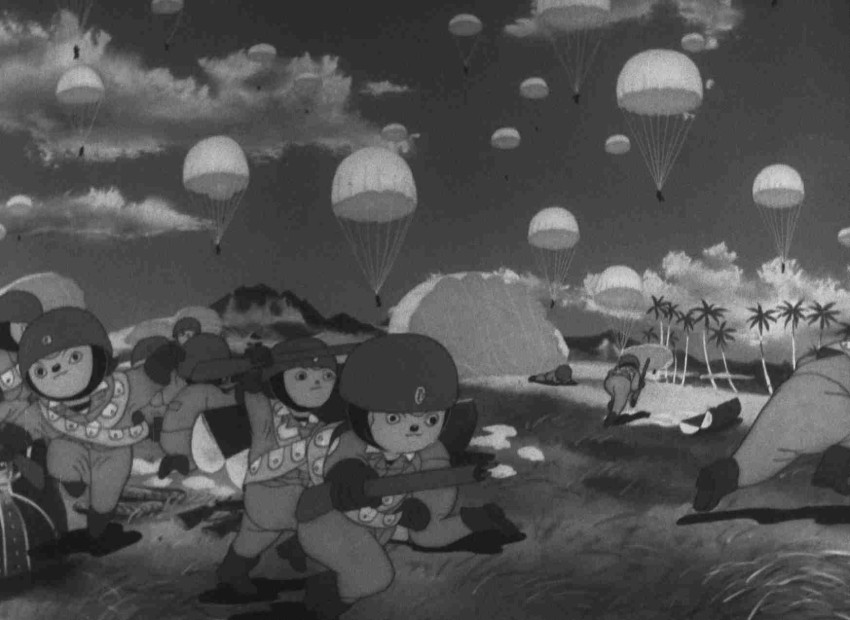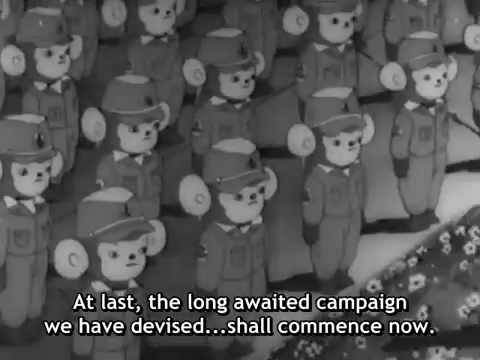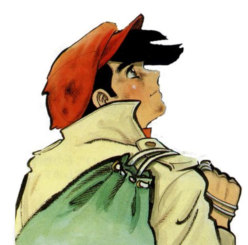In my series of posts about the Golden Age of Animation, I listed all my favorite cartoons from the big American animation studios. It’s time I take a look at the rest of the world’s part in the history of animation. While the animators from the U.S. were definitely more advanced at this point in time, there’s plenty of interesting works to be found on other continents. In countries like Russia, China, Japan,… animators were doing groundbreaking work to develop their own specific style and identity. We’ll briefly discuss some of the pioneers from Japanese and Chinese animation here.
Chinese Animation
Princess Iron Fan, China 1941

Modern animation arrived in China in 1918. Their animation tradition begins with the Wan Brothers, who made the first Chinese animated film (with sound) The Camel’s Dance in 1935. Inspired by Snow White and the Seven Dwares, the Wan brothers made Tien Shan Gong Zhu or Princess Iron Fan, an adaptation of the classic Chinese novel Journey to the West. It was the first feature-length film in Asia and had great impact on wartime Japanese animation and later on Osamu Tezuka, the founder of anime. While crude and unrefined compared to American animation of the same year, Princess Iron Fan is quite a feat, considering it is a product of an entirely new industry in the country. As to be expected, the animation is a loose collection of influences from established animation traditions by Disney, Fleischer,…. It leans heavily on rotoscoping for the “human” characters, with the eyes of the live actors often visible in the faces of the animated characters. The weird random movements during dialogues (actually quite reminiscent of early 3D video games, yep I’m retro-gaming too), use of set backgrounds and cutouts, or the sparkly decorations, look very “Russian” and sometimes influences of Warner Bros’ wacky “squash and stretch” style can be seen.

Japanese animation
Momotaro’s Divine Sea Warriors, 1945

The success of Princess Iron Fan prompted the Japanese navy to commission a wartime animated propaganda film. Momotaro: Umi no Shinpei or Momotarou’s Divine Sea Warriors (sometimes Momotaro’s Sacred Sailors), directed by Mitsuyo Seo, was the first Japanese feature-length film. It is a sequel to Momotarou’s Sea Eagles (1943), which was just a few minutes shy of being feature-length. Japanese animation wasn’t fully used as a propaganda tool during the war and as a result the film was aimed at children. A 16-year-old Osamu Tezuka was said to have been moved to tears by the movie’s hopeful nature, beneath the appearance of war propaganda. Mitsuyo Seo was shown Disney’s Fantasia by the Naval Ministry, which inspired him to give dreams to children and instill the hope for peace.
The influence of Princess iron Fan is visible. But the more you compare the two, the more obvious the typical Japanese “quirks” of animation become. There’s no animation for the sake of animation. The makers exploited every frame in a cinematic and stylized way, making the best use of budget and time constraints. To have a better understanding of why anime is what it is, definitely have a look at Momotarou’s Divine Sea Warriors and its predecessor.

This was a short post on Asian animation. But don’t be alarmed. There will be MUCH more on Japanese animation (1900-…) in a later post!
NEXT: History of Animation – Europe 1940-1949
PREVIOUS: Early Stages of animation: 1900-1940
Check out other posts about every major U.S. animation studio at “Animation” to the left!
